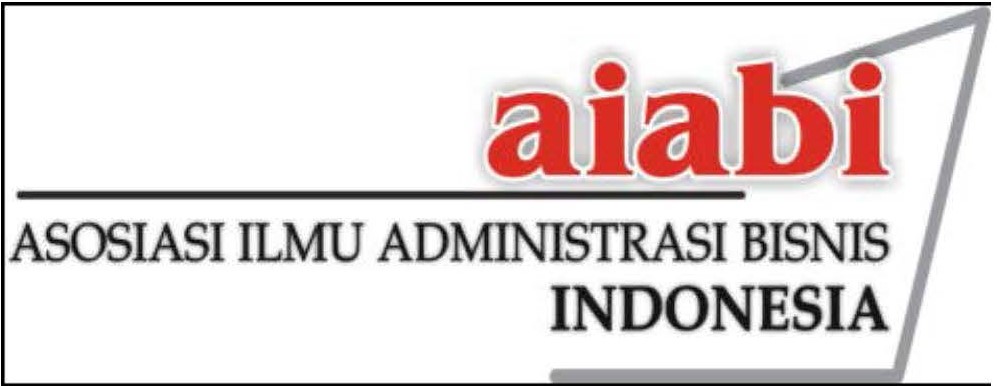PENGGUNAAN DIGITAL PAYMENT PADA USAHA MIKRO, KECIL, DAN MENENGAH
Abstrak
This study aims to analyze the transformation of micro, small and medium enterprise (MSMEs) financing in Indonesia. This research is motivated by the phenomenon of MSMEs, which often face problems in financing. However, on the other hand, financial institutions find it difficult to find a database of MSMEs to channel their loans. This study uses a descriptive method with a qualitative approach. Sources of data were obtained from various sources, both primary and secondary. Primary data is obtained from statements made by informants from the Financial Services Authority, the Association of Indonesian Crowdfunding Services, crowdfunding players, and MSMEs that have taken advantage of crowdfunding. Meanwhile, secondary data were obtained from several published articles. The results show that the government has helped provide a source of financing for MSMEs, both through banking and non-banking. However, there were several obstacles that occurred in the field, both from MSMEs and financial institutions. The presence of securities crowdfunding instruments raises new hopes for MSMEs in fulfilling financing. In addition to an easy submission procedure, access can also be done via a digital platform.
Penelitian ini bertujuan untuk menganalisis penggunaan digital payment pada Usaha Mikro, Kecil Dan Menengah (UMKM). Metode penelitian yang digunakan adalah kualitatif dengan jenis penelitian eksploratif. Sumber data diperoleh dari hasil wawancara mendalam dan studi literatur. Wawancara dilakukan dengan beberapa informan, antara lain: perusahaan asosiasi fintech, Bank Indonesia, Asosiasi UMKM Indonesia, dan perusahaan pengguna digital payment. Hasil penelitian menunjukkan bahwa penggunaan system pembayaran telah mengalami evolusi sejak jaman barter hingga system digital payment. Penggunaan system digital payment banyak memberikan beberapa manfaat. Adapun manfaat penggunaan digital payment dapat dirasakan baik oleh pelaku usaha sendiri maupun oleh konsumen. Dengan demikian penggunaan digital payment mampu meningkatkan efektivitas dan efesiensi khususnya bagi pelaku UMKM. Kesimpulan dari penelitian ini bahwa penggunaan digital payment mampu meberikan berbagai manfaat bagi pelaku UMKM.
Kata Kunci
Teks Lengkap:
PDFReferensi
Anonim. (2017). Ringkasa Hasil Survei Dampak Gojek Terhadap Perekonomian Indonesia. Lembaga Demografi FEB, Universitas Indonesia.
Armesh, H., Salarzehi, H., Yaghoobi, N. M., & Heydari, A. (2010). Impact of Online/Internet Marketing on Computer Industry in Malaysia in Enhancing Consumer Experience. International Journal of Marketing Studies, 2(2).
Bezhovski, Z. (2016). The Future of the Mobile Payment as Electronic Payment System. European Journal of Business and Management, 8(8), 127–132.
Botsman, R. (2017). Big data meets Big Brother as China moves to rate its citizens. Wired UK 21, 1–16.
Dahlberg, T., Huurros, M., & Ainamo, A. (2008). Lost opportunity why has dominant design failed to emerge for the mobile payment services market in Finland? Proceedings of the 41st Annual Hawaii International Conference on System Sciences (HICSS 2008).
Dehghan, F., & Haghighi, A. (2015). E-money regulation for consumer protection. International Journal of Law and Management.
Gartner. (2014). 44% Increase in Mobile Payments in Just 1 Year.
Gomber, P., Koch, J.-A., & Siering, M. (2017). Digital Finance and FinTech: current research and future research directions. Journal of Business Economics, 87(5), 537–580.
Indjikian, R. (2002). E-finance for SMEs: global trends and national experiences. Journals of Electronic Commerce, 1–38.
Kaynak, E., Tatoglu, E., & Kula, V. (2005). An analysis of the factors affecting the adoption of electronic commerce by SMEs: Evidence from an emerging market. International Marketing Review, 22(6), 623–640. https://doi.org/10.1108/02651330510630258
Kemp, R. (2013). Mobile payments: Current and emerging regulatory and contracting issues. Computer Law & Security Review, 29(2), 175–179. https://doi.org/https://doi.org/10.1016/j.clsr.2013.01.009
Laudon, K. C., & Traver, C. G. (2011). E-Commerce: Business, Technology, Society. Pearson. https://www.pearson.com/us/higher-education/product/Laudon-E-Commerce-2011-7th-Edition/9780136091196.html
Liébana-Cabanillas, F., Sánchez-Fernández, J., & Muñoz-Leiva, F. (2014). Antecedents of the adoption of the new mobile payment systems: The moderating effect of age. Computers in Human Behavior, 35(464–478). https://doi.org/10.1016/j.chb.2014.03.022
Ming‐Yen Teoh, W., Choy Chong, S., Lin, B., & Wei Chua, J. (2013). Factors affecting consumers’ perception of electronic payment: an empirical analysis. Internet Research, 23(4), 465–485. https://doi.org/10.1108/IntR-09-2012-0199
Nair, R. D., & Prabhu, P. (2018). Payments in the digital age: How the digital payments paradigm is redefining banking. Accenture.
Ondrus, J., & Pigneur, Y. (2006). Towards a holistic analysis of mobile payments: A multiple perspectives approach. Electronic Commerce Research and Applications, 5(3), 246–257. https://doi.org/10.1016/j.elerap.2005.09.003
Peterson, D., & Howard, C. (2012). Electronic Payment Systems Evaluation: A Case Study to Examine System Selection Criteria and Impacts. International Journal of Strategic Information Technology and Applications, 3(1), 66–80. https://doi.org/10.4018/jsita.2012010105
Phonthanukitithaworn, C., Sellitto, C., & Fong, M. W. L. (2016). An investigation of mobile payment (mpayment) services in Thailand. Asia-Pacific Journal of Business Administration, 8(1), 37–54.
PricewaterhouseCoopers (PwC). (2019). It’s time for a consumer-centred metric: introducing ‘return on experience. https://www.pwc.com/gx/en/consumer-markets/consumer-insights-survey/2019/report.pdf
Ramadan, R., & Aita, J. (2018). A model of mobile payment usage among Arab consumers. International Journal of Bank Marketing, 36(7), 1213–1234. https://doi.org/10.1108/IJBM-05-2017-0080
Schneider, G. (2011). Electronic Commerce. Course Technology, Cengage Learning.
Seno, P. H. K. (2012). Analisis Persepsi Nasabah Atas Keamanan dan Kepercayaan dalam Sistem E-payments. Jurnal Ekonomi Dan Bisnis, 11(2), 103–112. https://doi.org/10.32722/eb.v11i2.643
Slade, E. L., Dwivedi, Y. K., Piercy, N. C., & Williams, M. D. (2015). Modeling Consumers’ Adoption Intentions of Remote Mobile Payments in the United Kingdom: Extending UTAUT with Innovativeness, Risk, and Trust. Psychology & Marketing, 32(8), 860–873. https://doi.org/10.1002/mar.20823
Sumanjeet. (2009). Emergence of payment systems in the age of electronic commerce: The state of art. 1st South Central Asian Himalayas Regional IEEE/IFIP International Conference on Internet, AH-ICI 2009, 2(2), 17–36. https://doi.org/10.1109/AHICI.2009.5340318
Suryanto, Rusdin, & Dai, R. M. (2020). Fintech as a catalyst for growth of micro, small, and medium enterprise in Indonesia. Academy of Strategic Management Journal, 19(5), 1–12.
Tella, A. (2012). Determinants of E-Payment Systems Success: A User’s Satisfaction
DOI: https://doi.org/10.24198/adbispreneur.v7i1.39452
Refbacks
- Saat ini tidak ada refbacks.









